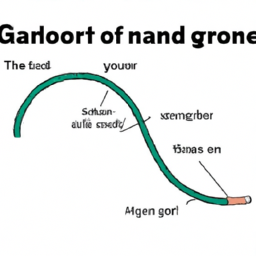Diameter of a Garden Hose What Is It
What Is The Diameter Of A Garden Hose
What Is the Diameter of a Garden Hose?
Having the right size of garden hose for a project is critical for optimizing efficiency and effectiveness. Before purchasing a hose, it is important to understand the diameter and length of the one that will meet the specific needs of the job. This article will provide an overview of garden hose sizes and the types of garden hose that are available, as well as the benefits and drawbacks of various diameters of garden hose.
The Basics of Garden Hose Sizes
Garden hoses come in a variety of sizes and lengths. The most common garden hoses are 5/8 inch in diameter and 25 to 100 feet in length. The diameter of a garden hose plays a large role in determining how much water flows from the spigot to the hose end. Smaller diameter hoses allow for less water flow, but also offer less resistance and kinking. Larger diameter hoses, on the other hand, can handle more water, but can also be difficult to move around and handle.
Common Garden Hoses
The most common type of garden hose is the rubber and vinyl variety. These hoses are lightweight and flexible, making them easy to maneuver for watering gardens and lawns. They are also resistant to kinking, making them ideal for many different uses.
Another common garden hose is the metal variety. These hoses are sturdier and less likely to kink than other types of garden hose and are often used in industrial or commercial settings. However, metal hoses can be more difficult to maneuver than rubber and vinyl hoses and also tend to be heavier and more expensive.
Expandable Hoses
In recent years, expandable garden hoses have become increasingly popular. These hoses are lightweight and expand up to three times their original size when filled with water, making them easier to maneuver than standard garden hoses. However, some experts caution that these hoses are more prone to kinking and are also more susceptible to punctures and breakage.
Benefits of Various Garden Hose Diameters
It is important to choose the right diameter garden hose for the job. A smaller diameter hose will allow for a greater flow of water, making it ideal for tasks that require a high-pressure stream of water, such as filling a pool or washing a car. Smaller diameter hoses are also easier to move around, handle, and store.
On the other hand, a larger diameter hose can handle more water, making it ideal for watering large gardens or filling large tanks. Although it may be more difficult to maneuver and handle, a larger diameter hose will also not kink as easily as a smaller diameter hose.
Brief Recap
Garden hoses come in a variety of sizes and lengths. Common garden hoses are 5/8 inch in diameter and 25 to 100 feet in length. Rubber and vinyl hoses are lightweight and flexible, while metal hoses are sturdier and heavier. Expandable hoses are lightweight and expand up to three times their size when filled with water. It is important to choose the right diameter garden hose for the job as smaller diameter hoses offer more pressure, while larger diameter hoses can handle more water and are less likely to kink.
Ultimately, the right garden hose for a particular job will depend on the size and type of job. Taking into account the diameter, length, and type of garden hose, it is important to be familiar with the pros and cons of each type of hose before selecting one for a project.

Previous Page
Next Page
